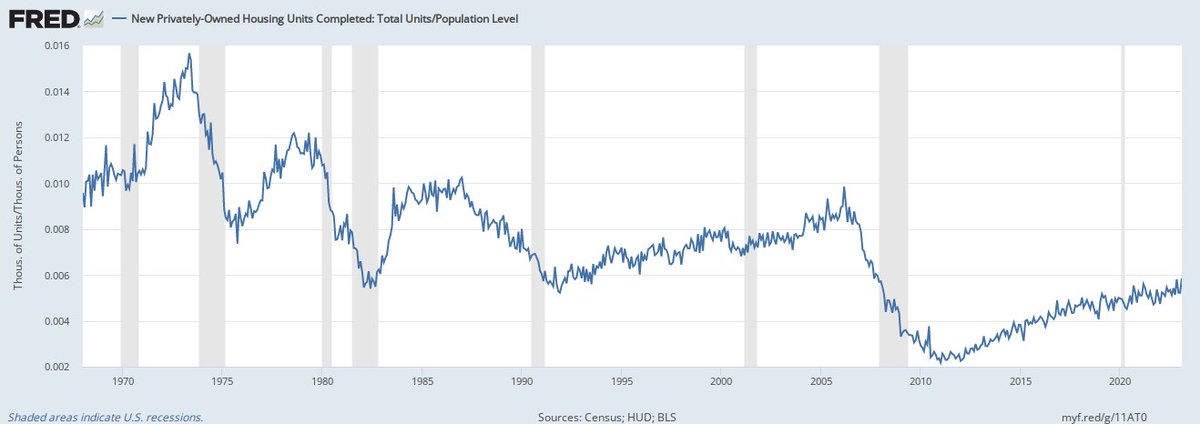
Sr. Housing Analyst @niskanencenter🏗️ | Urban Econ 🌐🔰🚋 | former @cbcny | member @opennyforall @yimbytown
Legalize housing. Tax land. End poverty with cash
How to get URL link on X (Twitter) App


https://twitter.com/ProfSchleich/status/1875561710440083798
 Yikes. Imagine being the guy in 2015 who discovers a "snail darter" clone far from where it could possibly be located, and immediately realizing a DNA test will likely prove the snail darter was a faked species in 1973
Yikes. Imagine being the guy in 2015 who discovers a "snail darter" clone far from where it could possibly be located, and immediately realizing a DNA test will likely prove the snail darter was a faked species in 1973 





 The old system on Doordash was essentially a live auction; each courier could view a trip & decide to accept or not. If couriers kept turning a gig down, the platform raised pay to clear the market.
The old system on Doordash was essentially a live auction; each courier could view a trip & decide to accept or not. If couriers kept turning a gig down, the platform raised pay to clear the market.
https://twitter.com/NiskanenCenter/status/1643996066835202055@AWJustus This dynamic makes manufactured housing bans a clear "canary in the coal mine" for the wider toolkit of exclusion
https://twitter.com/NiskanenCenter/status/1630663079380787218The YIMBY crisis will end when this flips:

 "What about induced demand from upzoning"
"What about induced demand from upzoning" 
https://twitter.com/BrownstoneDetec/status/1636351623030280195The original IRT laid 305,380 linear track-feet in 4.5 years...around 5600 linear feet per month.


 Transit-oriented growth should shrink VMT *per capita* when newcomers don't drive...but I'd only expect it to hold *total traffic* constant w/growing population, at best.
Transit-oriented growth should shrink VMT *per capita* when newcomers don't drive...but I'd only expect it to hold *total traffic* constant w/growing population, at best.
https://twitter.com/TheStalwart/status/1598292029880291329
 So instead of a blank window with dead space & short hours, as some peripheral bank branches can be, Capital One provides bank branches inside of a nice coffee shop--and their customers get half off coffee!
So instead of a blank window with dead space & short hours, as some peripheral bank branches can be, Capital One provides bank branches inside of a nice coffee shop--and their customers get half off coffee!
https://twitter.com/2AvSagas/status/1597997378761641985One version could be mark-to-market metering of all 3m spots while auctioning ~1.5m RPPs for reserved prepaid parking on the block you buy your RPP for.
https://twitter.com/aarmlovi/status/1582769038878736385Quality inpatient care--free of the crowding that doomed the old asylum model--is an alternative to today's "hostile design" approach of closing bathrooms, eliminating public space, & spiking benches in hope that untreated illness will simply disappear
https://twitter.com/SallyGold/status/1597624911513542657?t=fYKyHDI7Ya9c9zYDpD7Vmw&s=19
https://twitter.com/Nowooski/status/1595918916987092992I love Amtrak but it's a thoughtful love--I see their potential, but I won't pretend they do a good job
https://twitter.com/aarmlovi/status/1425170663980023812?t=mZ4uuTSSbqNxaJXrW-aS6w&s=19

https://twitter.com/DKThomp/status/1580182507315957762Today, many don't believe the Fed controls money supply. They think setting the floor rate in an abundant reserves system is barely relevant to the price level

 This would be a great dataviz. To be definitively convincing that the racism/crime/services/jobs problems aren't decisive, need to show that the South/West side neighborhoods *on the L* are also repopulating in this same pattern
This would be a great dataviz. To be definitively convincing that the racism/crime/services/jobs problems aren't decisive, need to show that the South/West side neighborhoods *on the L* are also repopulating in this same patternhttps://twitter.com/zbloom89/status/1549868285033910273?t=S8GaxHNBR2tVqKtg2cPDgQ&s=19

https://twitter.com/cbcny/status/1441040768555261953Partnership for NYC estimates the tristate area suffers ~$20 billion travel times losses every year—a “time tax” that does not yield usable revenue. Congestion pricing will convert a substantial share of that un-spendable “time tax” into a spendable $1 billion for MTA capital